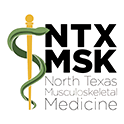My Knees Hurt! Fix it!
Traditional treatments for knee pain have often been NSAIDs or surgery. NSAIDs reduce inflammation, therefore reducing pain. Unfortunately, inflammation is our body’s natural method of healing. Millions of tiny cells rush to the injury to perform their individual role in the healing process. So, when inflammation stops, healing stops also. Surgery is often not necessary. 86% of musculoskeletal injuries can be effectively treated without surgery. Discover your options.
